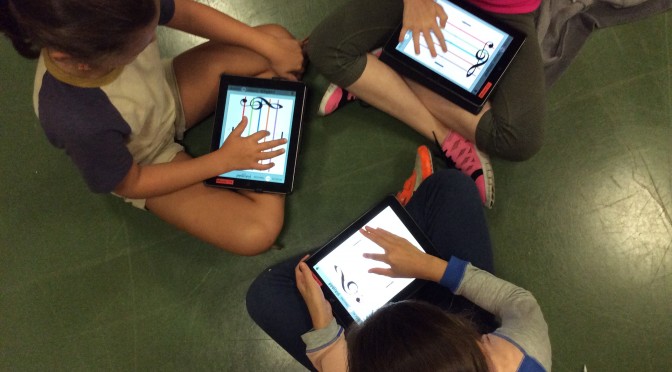Am I able to check in with which each of my students with enough regularity that I know what their needs are? And more importantly, are my students able to reflect upon and articulate their needs themselves? Up until recently I’ve relied upon assessing their work at certain points in a project or class time check-ins whenever possible to keep each of my students’ needs on my radar. For the student who is more of a quiet learner and less comfortable interacting and expressing themselves it is often a bit of a puzzle for me to determine their needs.
I’ve recently begun using the Socrative application to gather student feedback in the form of an end of the class, virtual check in. It is proving to be a worthwhile procedure that is really helping not only with knowing my students’ needs but also to encourage them to think and assess their own needs.
I’ve used Socrative for a number of years for real time assessment or poll taking and class time discussions etc. so I had some familiarity using it already. This end of class check-in is proving to be extremely beneficial. With all of my music classes students spend class time exploring musical concepts that they will use in their compositions. As in every class students progress at different speeds and have their break throughs at different moments. Class time is limited and I cannot physically spend enough time to address every students’ needs. I can see how they are progressing when I look at their official work but it is often much further after the moment when they were struggling to create their work or trying out various methods. How better it might be if I could get regular updates quickly and directly from them. I now have a way for my students to regularly (and quickly) tell me how they performed during the class, ask me for help and self-assess what they will do the next time they work on their project.
Here’s how it works:
1. I’ve created an assessment of just 3 short questions.
2. In the last few minutes of class students will gather together. Socrative allows me to push the assessment out to the students so they can instantly see it on their iPad, Chromebook or laptop (could be viewed on a smartphone too).
For some Socrative activities I would want to display for the class student responses so that we could have a class discussion etc. For this assessment however I display the question so students can simply see what question we are on and if they have submitted an answer.
3. The real power of this strategy comes in the 3rd and final step. After students have submitted their replies with one click I can have all of the responses sent to my email. The responses are laid out in a single, clearly written document that can be open in any spread sheet application. (I choose to use Numbers).
I can use these results to know if a student needs to see me during an IWP or if I need to reach out in some way. Most importantly it helps get them thinking about their own progress and to question what it is they need to do on their own before our next meeting. I can also share their responses with them next class if they need a reminder of what they had hoped to accomplish.







Matt, thanks for posting. I think we often make all kinds of assumptions about the efficacy of our teaching (i.e., “That lesson went really well.”) based on the comments of a few students. But if we are really interested in learning then we really do need to check in with all of our students on an ongoing basis. We can’t wait to determine what students are learning on the basis summative assessments. So tools like Socrative offer a really effective way to get a more granular picture of what learning looks like. Take a look at http://www.gosoapbox.com/tour. The Social Q&A tool is impressive because kids can “like” questions being asked by other students, which can help the teacher to get a sense of where there are shared confusions or interests.